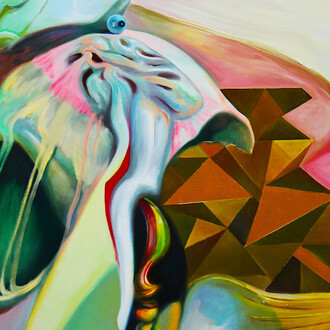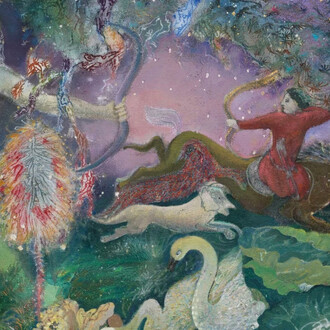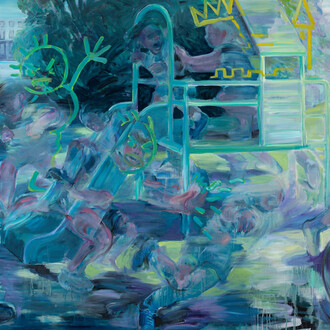Alina Grasmann’s magical-realist paintings explore modernist architecture, blending the formal qualities of specific sites with their history. The light-filled lived environments become chamber-play stages for reflections on memory and transience, inviting viewers to step inside and become part of the scene.
Grasmann’s new body of work, House of the spirits, depicts the Neutra House, designed and built in Los Angeles in 1932 by Austrian-American architect Richard Neutra. The series debuted at a museum in Germany, Brühler Kunstverein, in May 2025.
House of the spirits explores memory as a fluid, non-linear presence that overlays the current moment, akin to Japanese folkloric spirits that linger in spaces, sometimes visible only in shadows or reflections, tethered to the world by memory. The Neutra House becomes a site of simultaneity, where past, present, and future intertwine, and inhabitants, refracted through the glass walls of the house, appear as apparitions.
While preparing for this series, Grasmann archived her grandfather’s photographs — lifelong mementos that, in his final years marked by Alzheimer’s, became fragile traces of memory. As displaced Silesian Germans, the family carried fragments of their past through stories and salvaged images. Through the paintings, Grasmann preserves these histories, bridging personal and collective memory.
Roses anchor the series — symbols of haven, remembrance, and transition between past and present. Fire, a recurring motif, embodies transience and renewal. The Neutra House itself was rebuilt after a fire in 1963, mirroring how destruction and reconstruction are intrinsic to memory.
Without memory, we do not know who we are; without memory, we wander aimlessly, unsure of where we are going.
(Text by Augusto Góngora, from Chile: The forbidden memory (1982–88) by Rodrigo Atria)
















